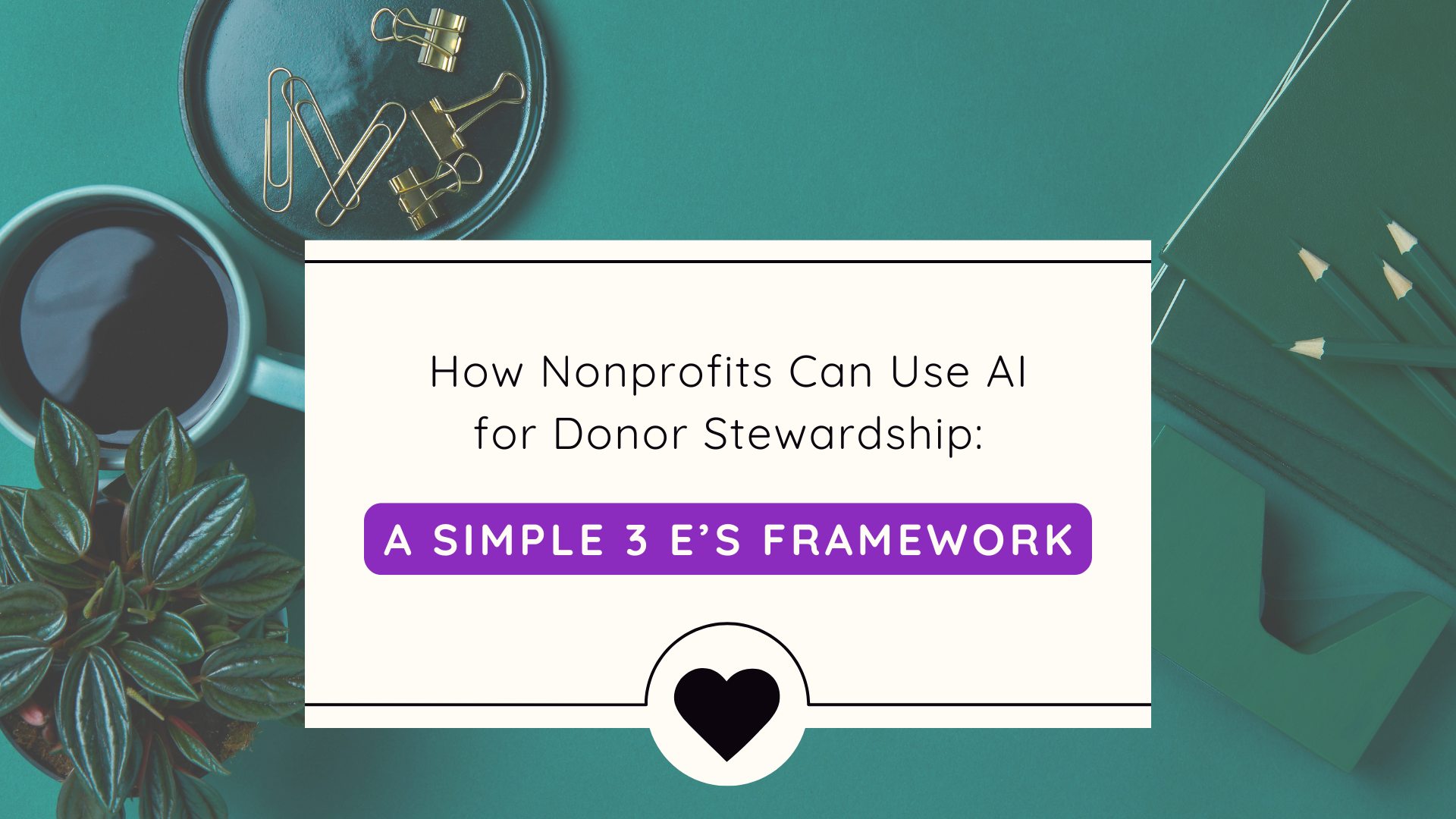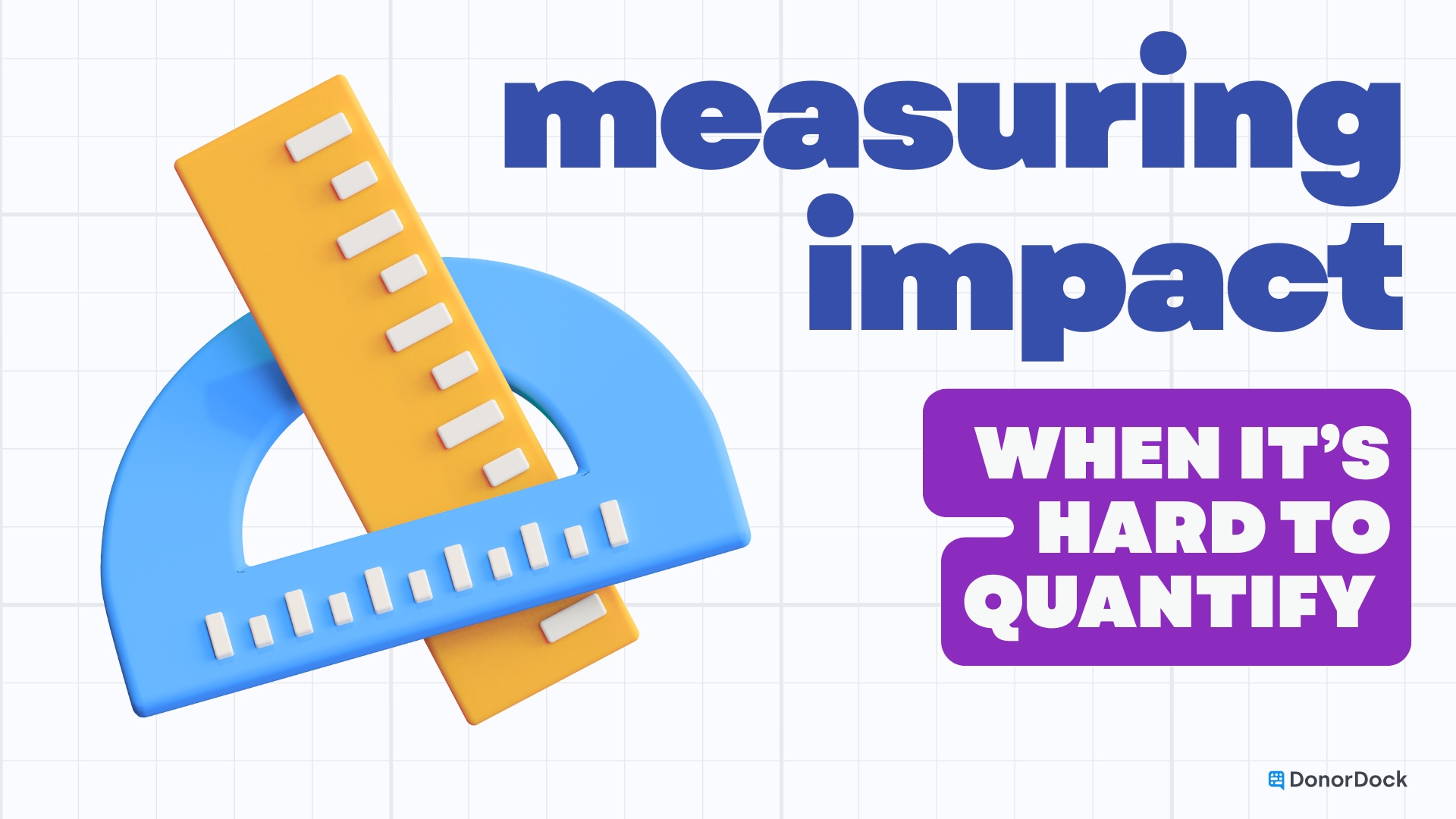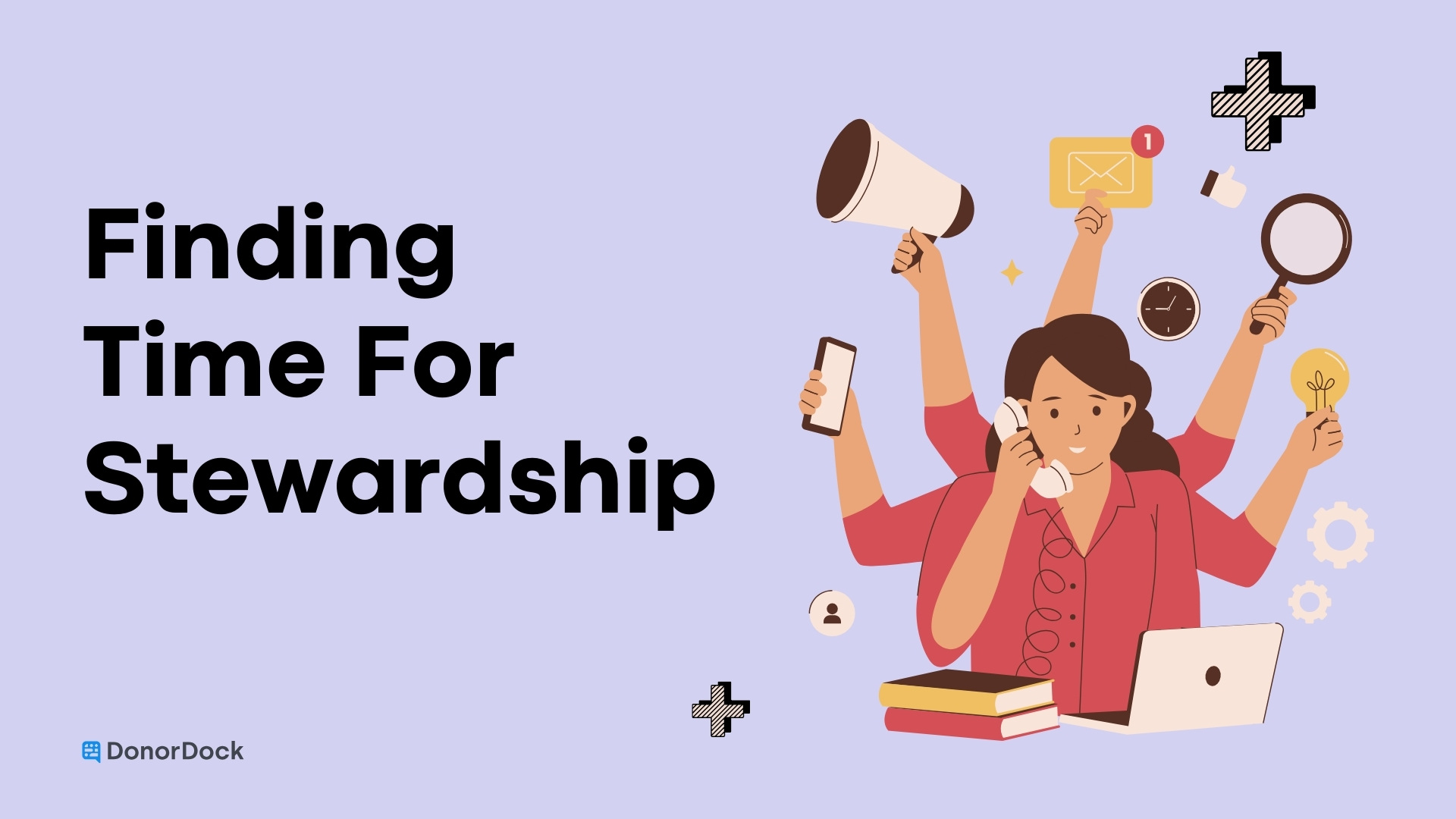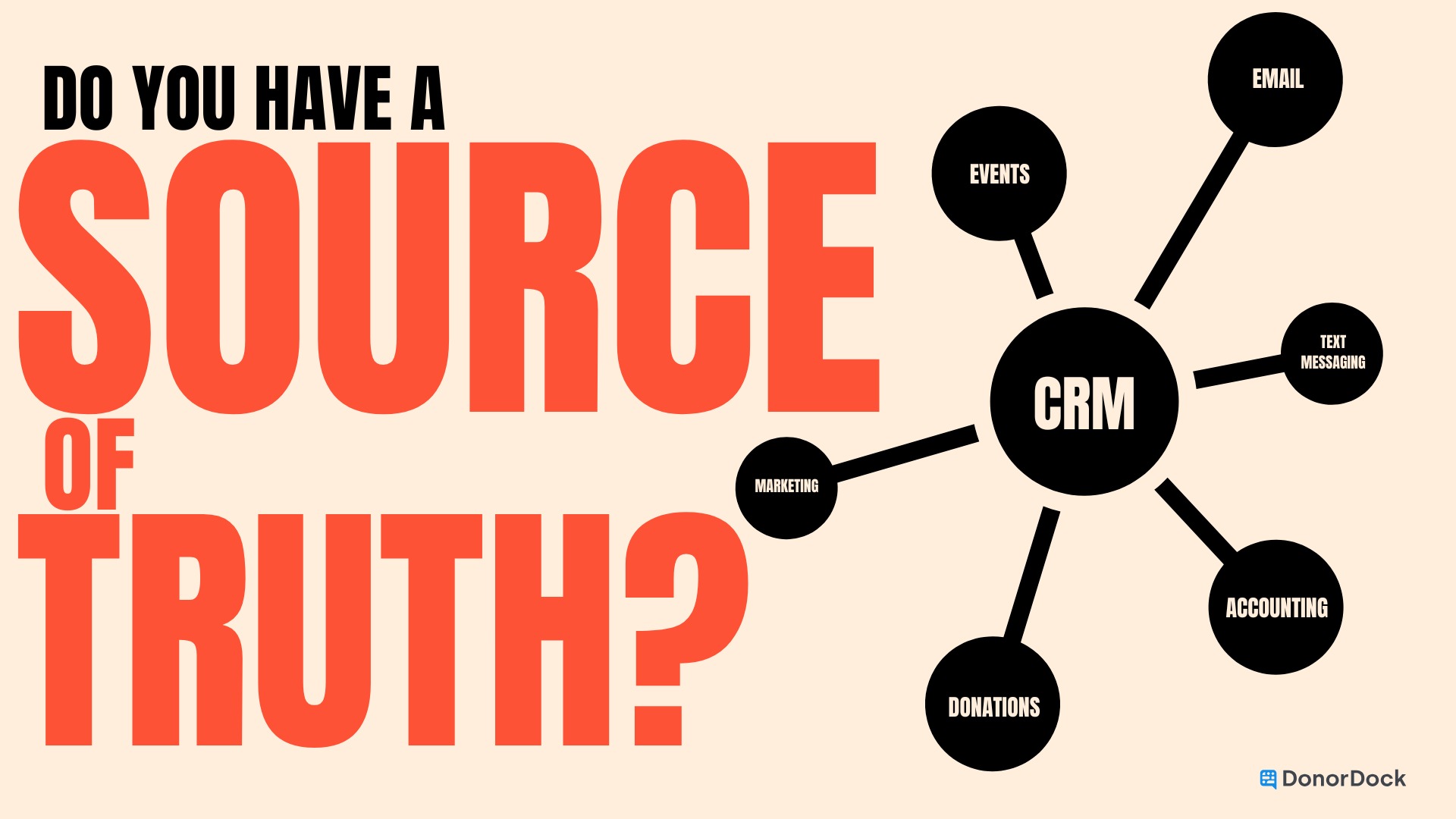Picture this: a rural nonprofit that’s been fueled almost entirely by grant funding suddenly realizes it needs a new path. Grants have kept the lights on, but the team knows long-term sustainability means building a base of individual donors. The problem? They’ve never really done it before. Sound familiar?
Many small and growing nonprofits face this exact crossroads. Shifting from grant dependency to donor-driven revenue feels intimidating, especially when you don’t know where to start. But with a clear strategy, small early wins, and a focus on proof, you can build momentum that transforms your fundraising future.
Over-reliance on Grants
Grants are a lifeline for nonprofits. They help fund core programs, cover operating costs, and give organizations the ability to launch important initiatives. But they also come with limitations, and when nonprofits rely too heavily on grants, cracks begin to show.
1. The unpredictability of funding cycles. Most grants are time-limited. They might cover a year or two, but when the cycle ends, your budget faces a cliff. If you don’t immediately secure the next grant, you risk halting programs, laying off staff, or scaling back services. This constant cycle of applying, waiting, and hoping is stressful for leaders and staff alike.
2. Restrictions on use. Grants are often tied to very specific deliverables. That means you might secure $50,000 for a program, but you can’t touch a penny of it to cover your electricity bill, staff training, or new technology. The result is a “starved backbone” problem—your programs are funded, but your infrastructure is not.
3. The opportunity cost. Writing grants is time-consuming. It pulls leadership and staff away from direct mission work. For small nonprofits with limited staff, the sheer effort of chasing grants can mean fundraising diversification takes a back seat.
4. Donor disconnect. A nonprofit that relies mainly on grants risks missing out on building authentic relationships with individuals in its community. Donors don’t just provide money; they become advocates, volunteers, and champions. Without cultivating them, you’re missing an entire layer of engagement that strengthens your mission.
In short: grants are good, but they shouldn’t be the only leg your fundraising stool stands on.
Diversification isn’t just about financial security, it’s about building a resilient community of support that ensures your mission thrives no matter what happens in the grant world.
Why Individual Giving Matters
Shifting focus to individual giving gives you more than just money in the bank. It provides:
- Flexibility: Individual gifts are often unrestricted. That means you can apply them where you need them most, whether that’s paying your staff fairly, upgrading software, or expanding outreach.
- Community connection: Donors become more than contributors. They often share your story, invite others to join, and even provide pro bono skills and resources.
- Sustainability: A healthy donor base provides recurring revenue that cushions you against the uncertainty of grant cycles. Even small gifts add up, especially when donors give monthly.
- Proof of community buy-in: Funders increasingly want to see that the community you serve supports your work financially. A base of individual donors strengthens your case when applying for future grants.
When nonprofits diversify by investing in individual giving, they stop living at the mercy of external timelines and start building their own.
A 90-Day Path to Launch Individual Giving
The best way to start isn’t by launching a massive donor campaign. It’s by taking small, focused steps that prove your impact and build confidence.
Step 1: Validate your impact metrics. Donors want to know their gifts matter. Start by pulling a few key numbers that show progress. For example, how many people you’ve served in the past quarter, or how many outcomes improved because of your work. If you don’t have all the data yet, start tracking now. Simple spreadsheets work fine at first.
Step 2: Collect stories to match the numbers. Data is powerful, but it comes alive with real human stories. Capture a short testimonial from someone you serve. Take a picture (with permission). Write down a volunteer’s experience. These pieces become the heart of your donor communications.
Step 3: Identify early champions. Every community has people who believe in your mission. They may already be volunteers, board members, or even small business owners who cheer you on. Reach out personally and ask them to support your first donor push. These early gifts give you confidence and create social proof.
Step 4: Run a small-dollar “proof” campaign. Instead of asking for $10,000, launch a 90-day campaign focused on achievable gifts, like $25 or $50. Position it around something concrete: “Help us raise $5,000 to fund a new after-school program.” Having a clear goal tied to a story makes it easier for donors to say yes. Bonus: campaigns with clear, time-limited goals feel more urgent and compelling.
Step 5: Report back fast. The most important step? Close the loop. As soon as you hit your goal, share the results with your donors. Tell them what their dollars made possible. Gratitude and proof are the foundation of long-term donor relationships. When donors see impact quickly, they’re far more likely to give again.
When donors see impact quickly, they’re far more likely to give again.
Building Beyond the First Campaign
Once you’ve run your first donor campaign, you’re building a new way of sustaining your mission. Here’s what those early wins give you:
- Credibility: You’ve shown that your community believes in your mission. Those donor numbers are powerful proof for funders and partners.
- Stories: The testimonials, photos, and outcomes from your first campaign can be reused in future appeals, reports, and grant applications.
- Confidence: Your team knows how to plan, launch, and steward a donor campaign. That experience makes the next one easier.
From here, the path expands. You can launch a monthly giving program, segment donors by interest, or even create a stewardship calendar. Every new campaign builds on the proof and trust you’ve established.
And you don’t have to do it all manually. Tools like DonorDock make it easier to track donations, manage relationships, and automate thank-yous. That way, you can focus on connecting with people, not drowning in spreadsheets.
Conclusion
Making the leap from grants to givers doesn’t happen overnight, but you don’t need to overhaul everything at once. Start small, gather proof, and use those wins to fuel your next step. Every $25 gift, every thank-you call, every shared story is a brick in the foundation of donor trust.
Diversification isn’t a luxury, it’s a necessity. Relying too heavily on grants puts your nonprofit at risk. But when you invite donors into your story, you create a resilient, people-powered movement that can weather funding shifts and grow stronger over time.
Here’s your action step: pick one program or project, set a 90-day goal, and invite your community to step in. You may be surprised at how ready people are to support you—if only you ask.

.jpg)










